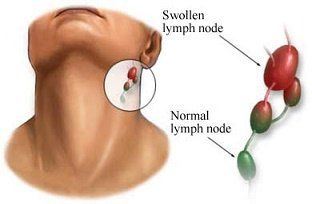This is an automatically translated article.
Lymphoma is a malignant form of lymphoma, a cancer of the lymph nodes involving white blood cells. Non-Hodgkin lymphoma and Hodgkin lymphoma are the two main types of lymphoma.Here are the differences between non-Hodgkin lymphoma and Hodgkin lymphoma.
1. Prevalence and types of the disease
Hodgkin lymphoma: Hodgkin lymphoma is a very rare type of cancer. There are six types of Hodgkin lymphoma, the most common of which are classical and mixed-cell classical. Non-Hodgkin Lymphoma: Most diagnosed cases of lymphoma are the non-Hodgkin's form. There are more than 60 types of non-Hodgkin lymphoma, the most common of which is diffuse B-cell lymphoma.2. Average age of disease
Hodgkin lymphoma: Patients diagnosed with the disease are between 20 and 34 years old, the average age is 39 years old. Non-Hodgkin lymphoma: Patients were diagnosed with the disease 55 years of age or older, the median age was 66 years.
U lympho
3. Tumor location
Non-Hodgkin lymphoma and Hodgkin lymphoma both start in the lymph nodes. However, they can spread beyond the lymph nodes and affect other organs in the body.Hodgkin lymphoma: Hodgkin lymphoma can start in one or more lymph nodes, often starting in parts of the upper body such as the neck, chest, or armpits. They then spread to neighboring groups of lymph nodes. Non-Hodgkin's Lymphoma: Meanwhile, non-Hodgkin's lymphoma usually starts outside the lymph nodes and in different parts of the body. Most cases of extranodal non-Hodgkin lymphoma are in the abdomen, in the gastrointestinal tract.
4. Diagnosis and treatment

U lympho Hodgkin thường được chẩn đoán phát hiện ở giai đoạn đầu, tăng khả năng điều trị
Hodgkin lymphoma: A biopsy of the lymph node tumor will show Reed-Sternberg cells. These are the abnormal cells that are common in Hodgkin lymphoma. If the number of cells is higher, it means that the disease is progressing at an advanced stage. In diagnosis and treatment, Hodgkin's lymphoma is often diagnosed at an early stage, so the disease is highly treatable and prolongs the survival time after treatment. Non-Hodgkin Lymphoma: Meanwhile, a biopsy of non-Hodgkin lymphoma will not show Reed-Sternberg cells. In terms of treatment, most cases of non-Hodgkin lymphoma when detected are at an advanced stage. However, the disease is still treatable. Non-Hodgkin lymphoma and Hodgkin lymphoma present similar clinical presentations and treatments. However, accurate differential diagnosis of each disease will give a high rate of successful treatment and prognosis.
If you have unusual symptoms, you should be examined and consulted with a specialist.
Please dial HOTLINE for more information or register for an appointment HERE. Download MyVinmec app to make appointments faster and to manage your bookings easily.
References: cancercenter.com
MORE:
Hodgkin: Causes, symptoms, diagnosis and treatment Diagnosis of lymphoma by ultrasound Can treatment of non-Hodgkin lymphoma be delayed?













